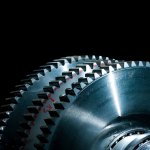Emerging Technologies in Industrial Automation
Industrial automation is a rapidly growing field that promises to revolutionize the way factories and production lines operate. As new technology emerges, automation is becoming more efficient and cost-effective than ever before. In this blog post, we’ll explore some of the cutting-edge technologies being used in industrial automation today and discuss the potential implications of their usage.
Artificial Intelligence and Machine Learning
Artificial Intelligence (AI) and Machine Learning (ML) are revolutionizing the way industrial automation is being done today. These cutting-edge technologies are enabling the development of intelligent machines that can learn from data and make decisions based on that learning. AI and ML have a broad range of applications in the industrial automation sector, from predictive maintenance to automated inspection and quality control.
One of the key benefits of AI and ML in industrial automation is their ability to optimize processes by reducing human error and improving efficiency. They can help manufacturers identify and correct inefficiencies in production processes and reduce the need for manual inspection and quality control. This leads to cost savings, increased productivity, and higher quality products.
Robotics and Automation
The manufacturing industry is no stranger to automation, and robotics is just the latest addition to the industrial landscape. With the advancement of technology, the role of robots in manufacturing is expanding rapidly, and the trend shows no signs of slowing down.
Robots are now being utilized in various manufacturing processes, from simple assembly line tasks to complex and precise operations such as welding, painting, and material handling. Industrial robots have the ability to work 24/7, and they are capable of achieving a high level of accuracy and consistency, which is crucial in the manufacturing industry.
Automation in manufacturing not only reduces the time and costs associated with production but also improves the quality and safety of the finished product. Robots can perform tasks that are too dangerous or challenging for humans, such as handling heavy objects or working in hazardous environments. They also reduce the risk of workplace accidents, leading to a safer and more efficient manufacturing process.
Predictive Maintenance
By analyzing data from sensors and other sources, predictive maintenance can help identify potential issues before they cause downtime or other problems. It involves the use of advanced analytics tools to analyze large amounts of data from various sources, including sensors, monitoring systems, and historical data.
The data is used to predict when maintenance will be required, so that repairs can be made before the machinery fails. This can save a considerable amount of time and money, as well as reduce the risk of accidents and injuries.
Another benefit of predictive maintenance is that it can help identify patterns and trends in machine behavior, which can be used to optimize performance and reduce energy consumption. By collecting and analyzing data in real time, industrial operators can gain insights into how their machinery is working, and make changes to improve efficiency and reduce waste.
As technologies continue to evolve, we can expect to see even more advanced predictive maintenance systems being developed, further improving the efficiency and effectiveness of industrial automation.
Invest with Air & Hydraulic Equipment
Since 1971, Air & Hydraulic Equipment, Inc. has been providing unsurpassed products, expertise, and value-added services to a vast customer base that relies on hydraulic, pneumatic, electric, and automation processes throughout Tennessee, North Georgia, and Southwest Virginia. Whether you’re new to industrial automation or looking to upgrade your existing equipment, we’re here to help.
Contact us today to learn more about our services.










